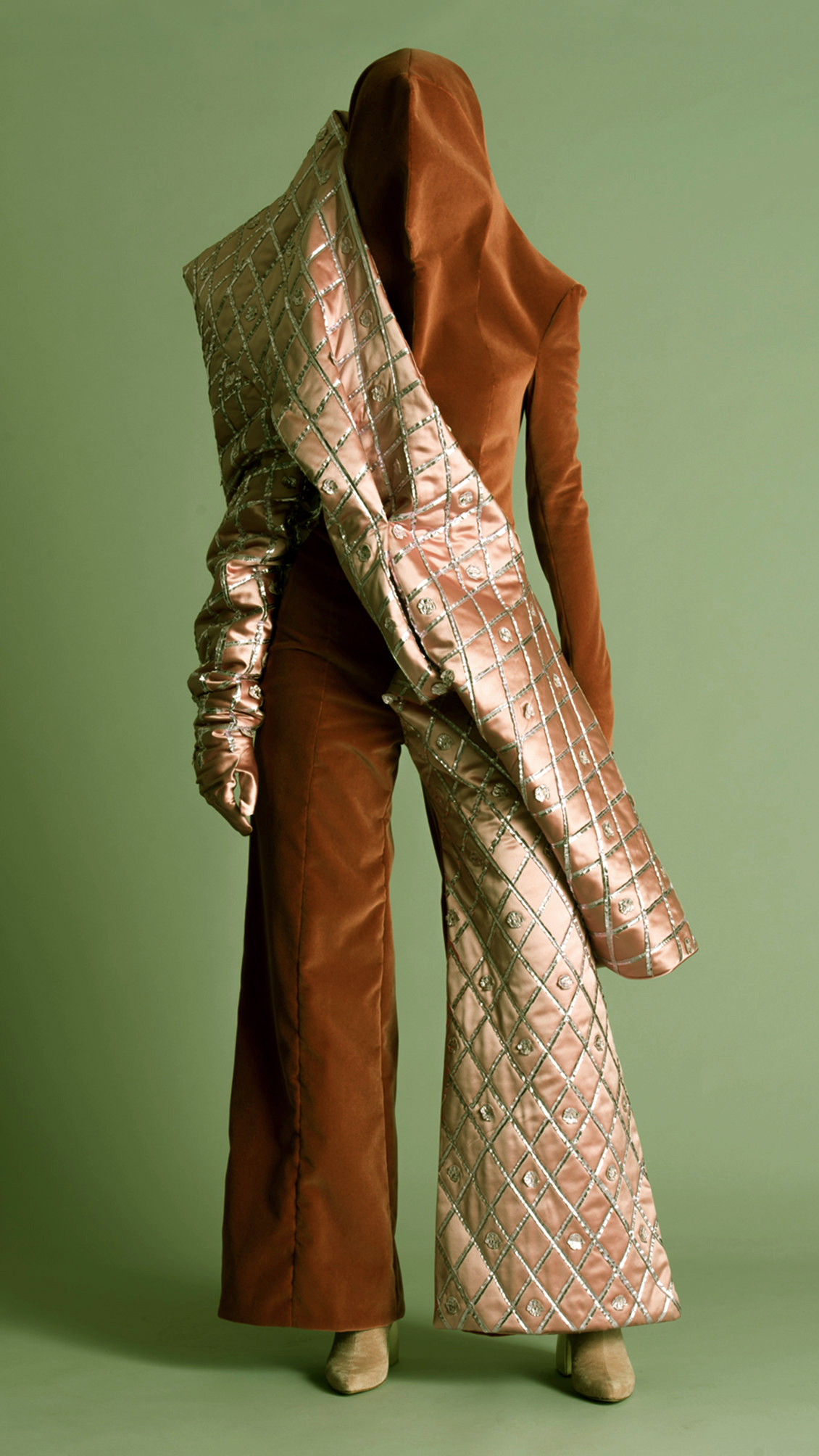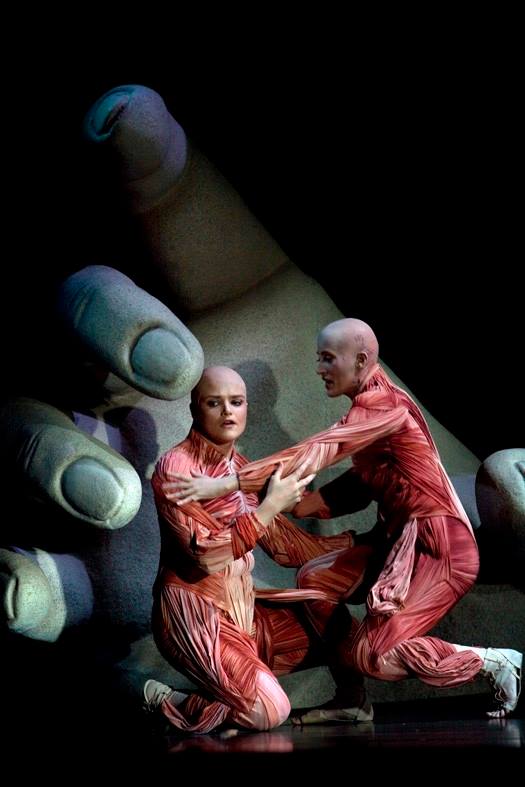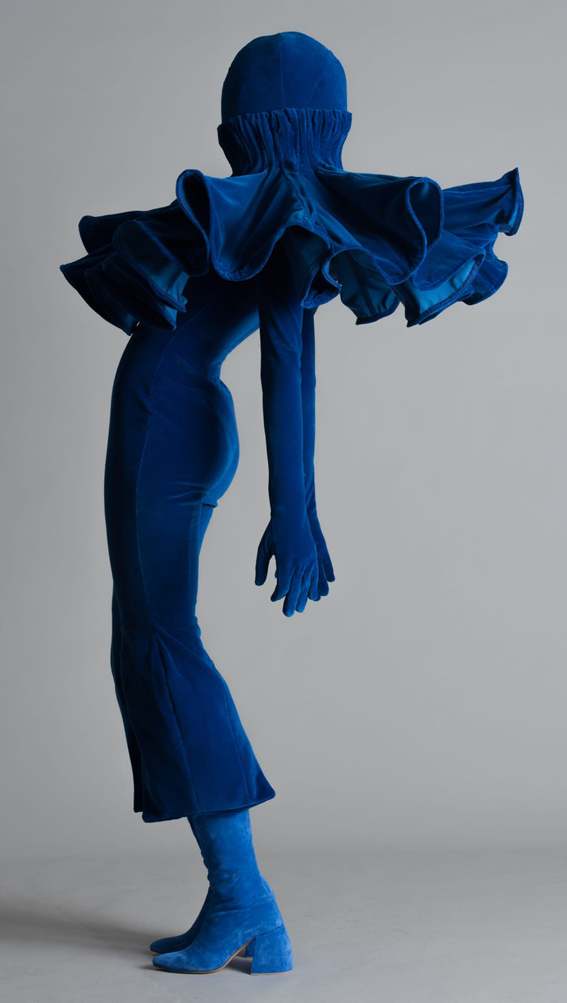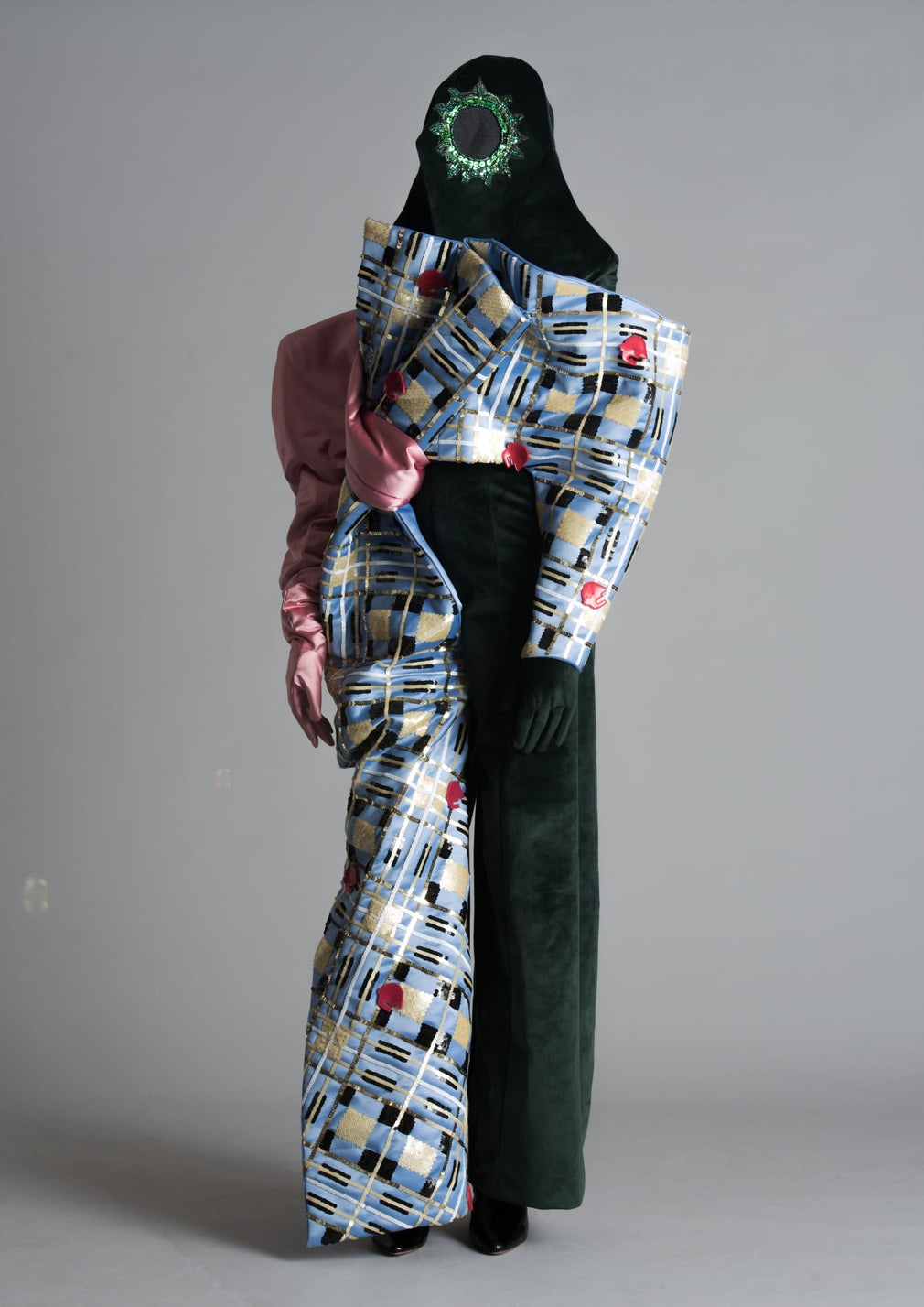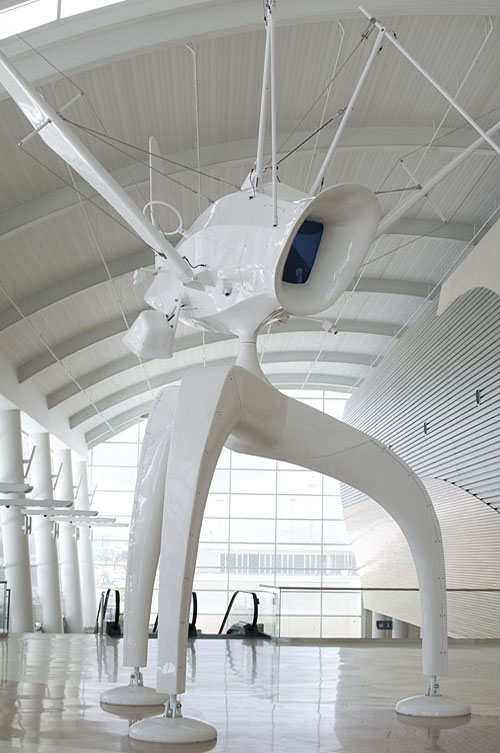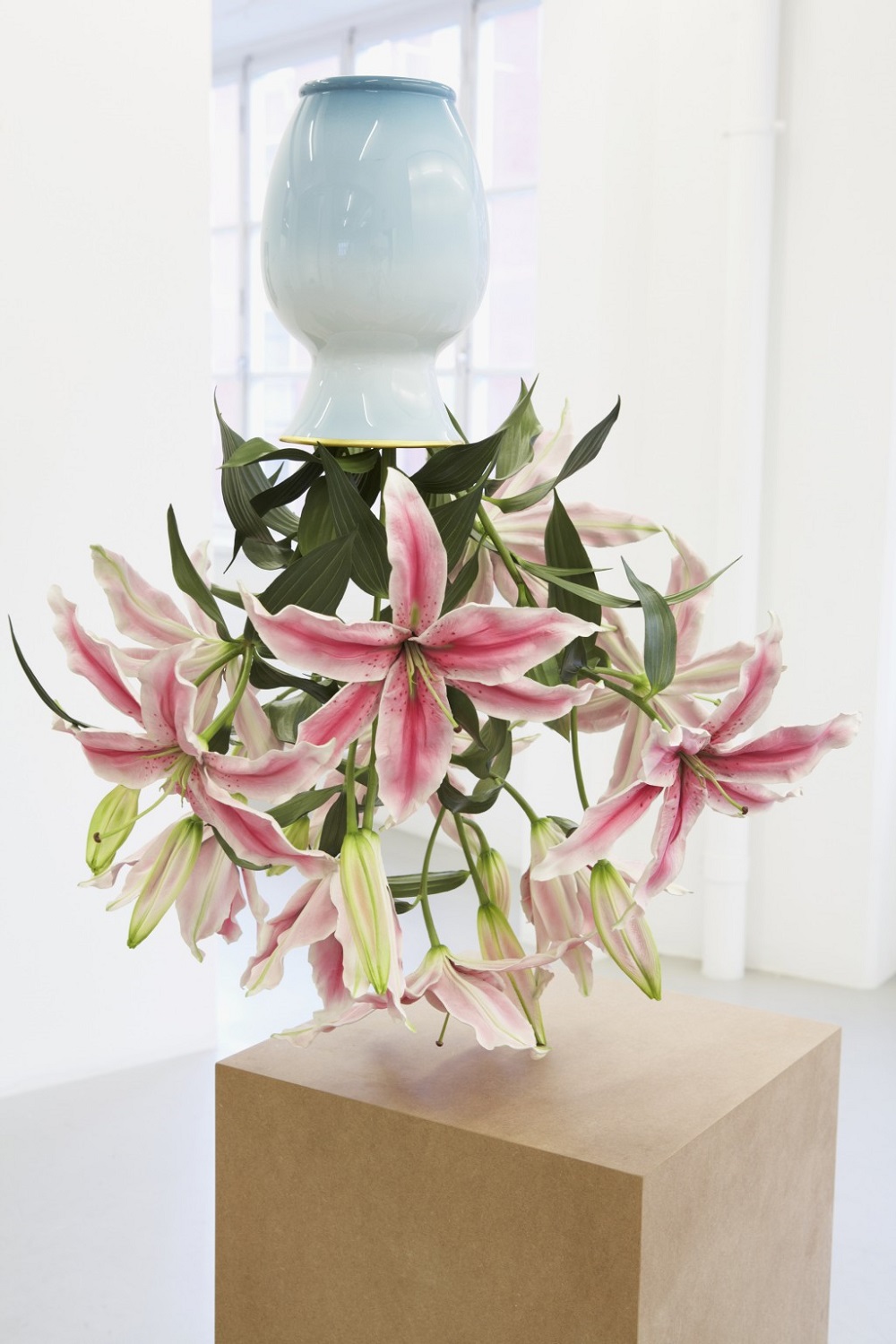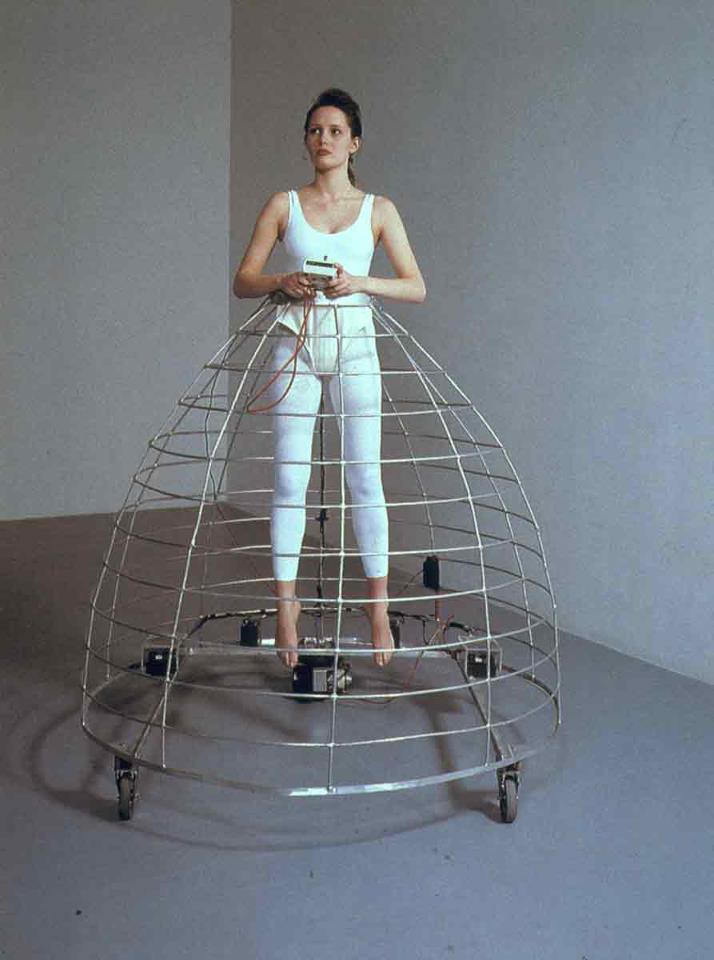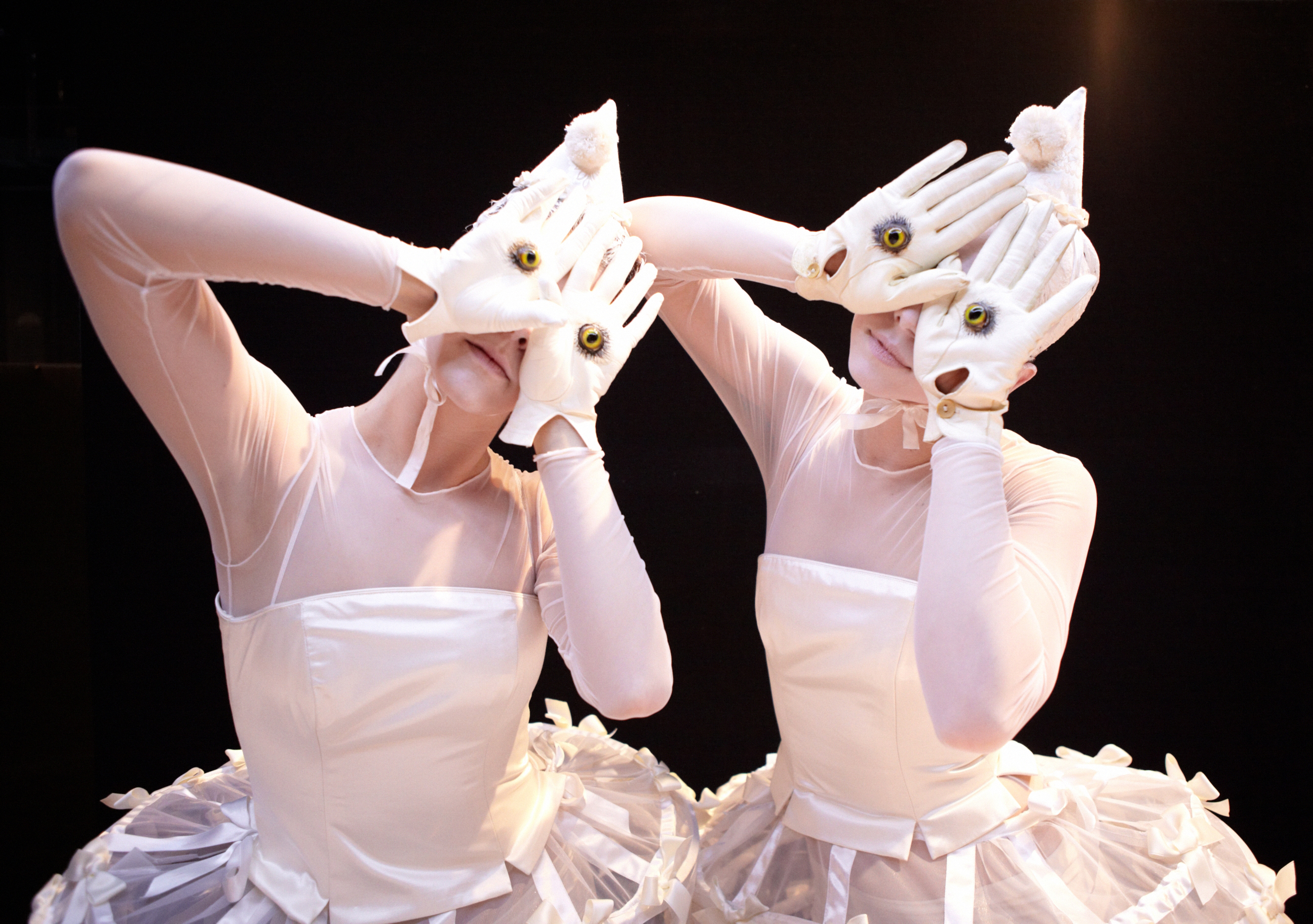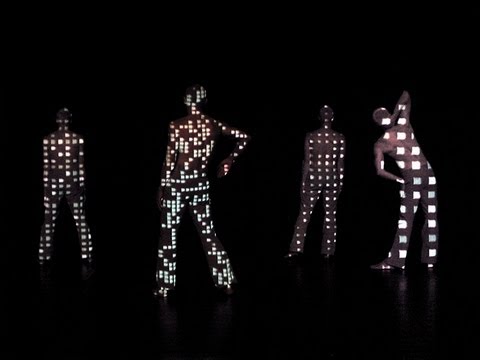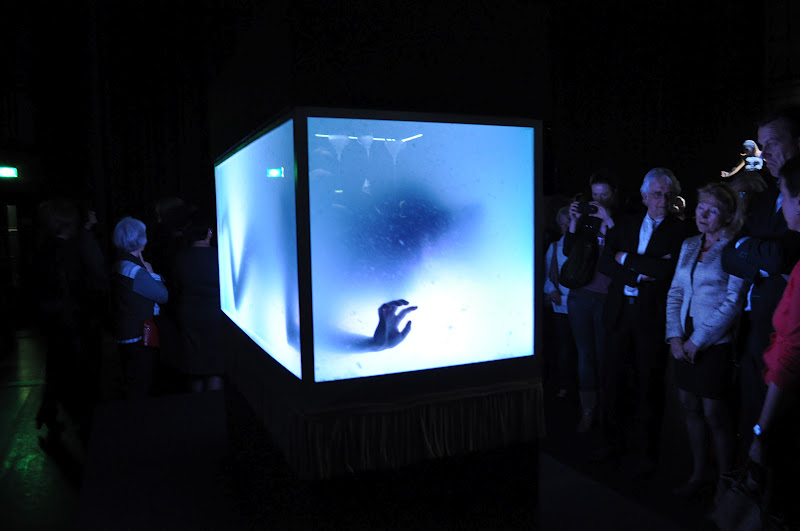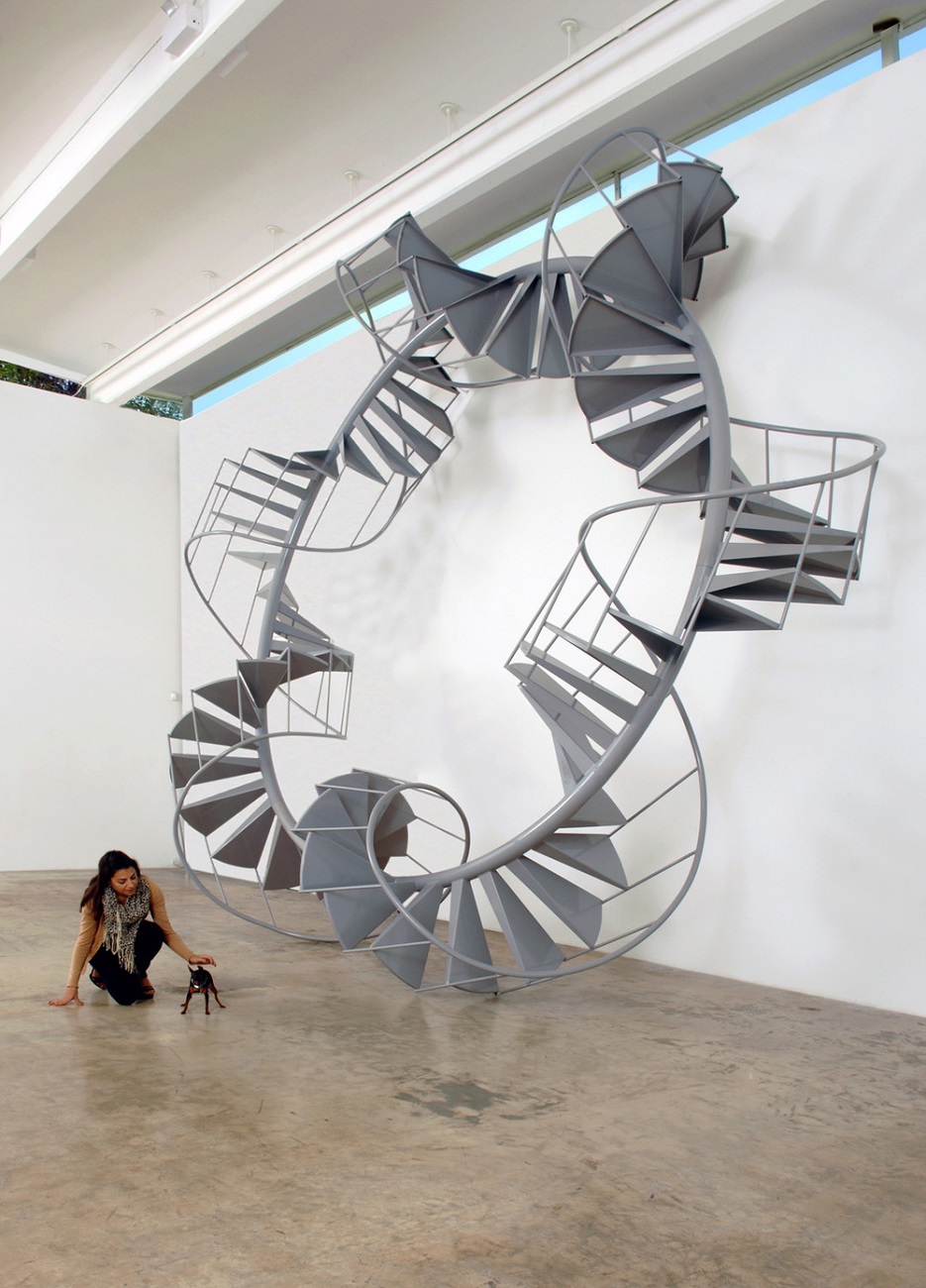Schnitzelprinz
via highlike submit
Bildstein | Glatz Schnitzelprinz, 2010 wood, screws 340 x 540 x 255 cm BANALES, ABSURDES, DUMMES, ÜBERSEHENES, UNRELEVANTES, VERBORGENES, FALSCHES UND UNSINNIGES ODER: LASSEN WIR UNS WENDEN! (…) Der Schnitzelprinz (2010), den sie für die Ausstellung “Der Blitz schlägt nie zweimal am selben Ort” ein entwickelt haben, fungiert als Perspektivenwender. Holzfaserplatten und Latten fügen sich zu einer skulpturalen Apparatur zusammen: Zwei halbrund gebogene Platten formen eine Art Rutsche. Wer sich oben hineinstürzt kommt unten gewendet heraus, erlebt die Temporary Gallery neu. Indem er den Rutschtenden um die eigene Achse vom Bauch auf den Rücken oder umgekehrt wendet, erzeugt der Schnitzelprinz einen „Rundumblick“: plötzlich steht die Welt Kopf! Auch wenn die „Rutsche“ offiziell nicht zur Benutzung freigegeben wird, implizieren Bewegung und Form die Möglichkeit des „Wendens“. Dem Schnitzelprinzen liegt die empiristische Überlegung zu Grunde, dass Bedeutung maßgeblich durch sinnliche Wahrnehmung bestimmt ist. Verändert sich ein Sinneseindruck, reguliert er unser Weltkonstrukt – kurz: was wir wahrnehmen erzeugt Ideen. Im Gedankenexperiment werden wir aufgefordert, Grundvoraussetzungen bildnerischen Sehens und Wahrnehmens zu reflektieren. Bisherige Annahmen über unsere Umwelt erweisen sich als falsch, der zufälligen Anatomie des menschlichen Körpers geschuldet. Wir müssen uns davon lösen, zufällig Wahrgenommenes als Wirklichkeit zu begreifen. Die Werke setzen ihre eigene Unabgeschlossenheit voraus. Denn um Fragen aufzuwerfen, ist es nicht nötig, Antworten zu liefern: Wir sollen weiterdenken! Deshalb legen die Künstler Spuren für den Rezipienten, der dem Experiment mit Raum, Körper und Apparatur selbst auf die Schliche kommen soll: Was wäre wenn…? Sie erforschen die Wahrnehmung des Raumes und der umliegenden Kunstwerke, die sich in der Temporary Gallery befinden: Nina K. Doeges pinke Schläuche etwa fallen nicht mehr in einer Kaskade von oben herab, sondern wachsen wie Ranken der Decke entgegen. (…) Andrea Günther, 2010.

